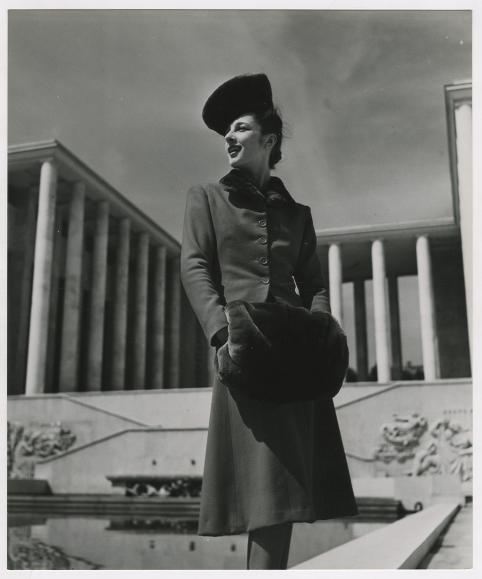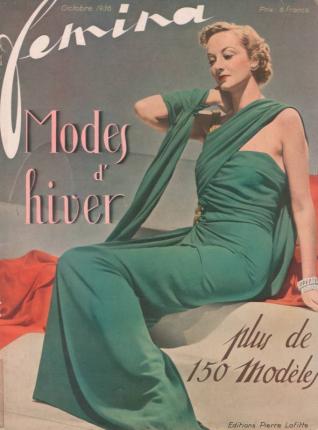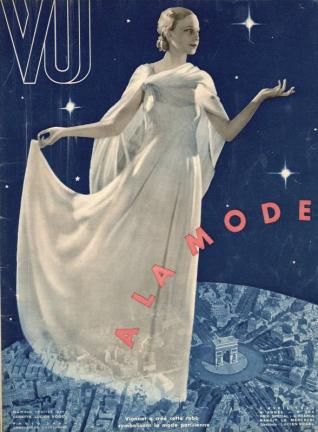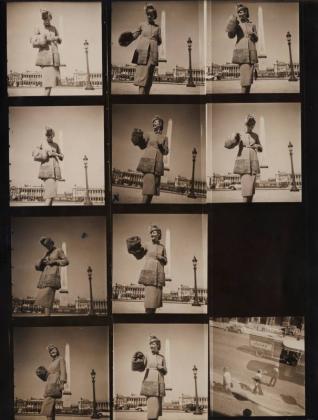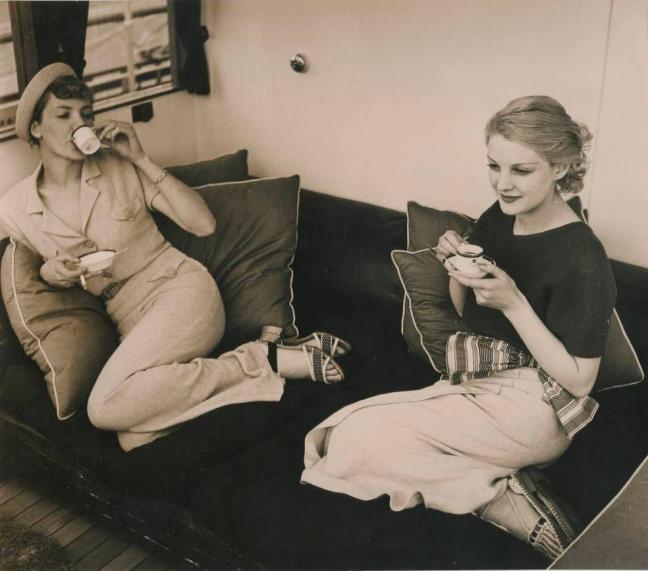Le Chic Français
Images of women, 1900-1950
The show entitled “Le Chic Français” is a retrospective of the history of fashion photography at the start of the 20th century through more than 300 pieces from the collections of the musée Nicéphore Niépce. It occupies two of the museum’s temporary exhibition spaces and the photographs and magazines illustrate a history that is closely linked to the changes in the place of women in society.
Early fashion photography was timid and lacking in audacity. A number of fashion magazines existed at the start of the 20th
century but most illustrations were drawings. While in the media, fashion photography developed at the same rate as general photography, up until the 1920s, technical printing constraints means that it was not often used. The photographers worked in studios, the models didn’t move and the layouts were stiff and uninspired. This way of depicting fashion and clothing was obviously a reflection of the position women held in society.
In the 1920s-30s, a “New Vision” took over. Photographers like Jean Moral, Maurice Tabard and André Steiner, took photography in a different, resolutely modern direction.
The inter-war period saw photography and magazines accompany the emancipation of women in society. Photographers began to experiment, coming up with spectacular angles from which to shoot, daring compositions and modern subjects; they provided a new image for the modern woman, a vision that was finally free.
These multi-faceted photographers were recruited by the fashion industry and brought their experience and skill to the table when working for magazines. The result was an image of a modern, chic, dynamic and urban femininity. The shoots finally got to leave the studio and use the streets of Paris as a backdrop, leading to the city coming to be regarded as the fashion capital of the world.
The exhibition presents work by the following photographers, among others:
Henri Manuel
Paul de Singly
Charles Lhermitte
Edward Steichen
Pierre Boucher
André Steiner
Horst P Horst
Maurice Tabard
Francois Kollar
Laure Albin Guillot
Germaine Krull
Daniel Masclet
Man Ray
Roger schall
Jean Moral
…
And papers and magazines such as:
Art Vivant
Comœdia illustré
Harper’s Bazaar
La mode illustrée
Jardins des modes
Vogue
Vu
Paris Match
Diversion
Paris Magazine
…
This exhibition is produced with support from the Ville d’Evian and was shown from October 28 to January 21 2018 at the Palais Lumière.
Curator: Sylvain Besson - musée Nicéphore Niépce
Scenographers: Sylvain Besson - musée Nicéphore Niépce and LePetitDidier

The representation of fashion in drawings - the early days of women’s magazines
In the late 19th century, women’s weekly magazines, which were aimed at a disparat readership, featured the latest fashions along with large numbers of descriptions and fashion plates. The magazines were printed in large format and favoured the use of narrative to describe the models. The illustrations, in the form of etchings, were particularly detailed. These magazines provided a means of staying up to date with the latest developments and provided everything dressmakers needed to reproduce the items depicted. Whilst some studios seemed eager to specialise in fashion photography, the printing costs involved restricted the use of photographs in the press. Drawings and their reproduction in the form of fashion plates remained the favoured media.
La Gazette du Bon Ton
In 1912, influenced by the aesthetic of the Ballets Russes, the fledgling Art Deco moveme and the couturier Paul Poiret, Lucien Vogel launched a new magazine, La Gazette du Bon Ton , which would transform the fashion press. He surrounded himself with the best artistic talents of his day and created a whole new kind of magazine. La Gazette duBon Ton was a small-format upscale publication which was aimed at a well-to-do clientele. It was also available at the shows of the great couture houses.
The first studios - photography replaces drawings
During the first few decades of the 20th century, photography gradually came to the fore, particularly in the non-specialist press. L’Art vivant and other theatre magazines promoted fashionable attire through photography, employing an almost journalistic approach (Studio Séeberger and Manuel). Influenced by the Pictorialists, “artistic” photographers such as Baron de Meyer offered a new approach to fashion photography. Since then, drawings and photographs have coexisted in women’s magazines.
Fashion photography and inspiration from the Pictorialists
In the late 19th century, fashion photography drew to a large extent on the techniques of “Pictorialism”, a photographic movement which cherished one obsession: to raise photography to the status of a fine art. These techniques, when applied to fashion photography, did not seek to convey a sense of naturalness but rather to accentuate the theatricality of the scene. What fashion photographers wanted was to create an intimate yet elegant atmosphere.
Le Jardin des Modes
Le Jardin des Modes was intended to be a “genuinely practical glossy magazine”. The illustrations, therefore, both drawings or photographs, were designed to make dressmakers’ work easier. The main photographers who worked for Le Jardin des Modes were Maurice Tabard, Georges Saad and Horst P. Horst. The illustrations were provided by Georges Lepape or Paul Iribe.
VU
Created by Lucien Vogel, VU was the first current affairs magazine to include photography. The combination of text and pictures made perfect sense and photographs no longer simply served as illustrations. It was in VU that photojournalism was born. New page-setting possibilities enabled the creation of a publication which was more modern and easier to read.
The illustrated fashion press and the avantgarde - Jean Moral
Jean Moral’s early photographic career was inextricably linked to his relationship with Juliette Bastide. He photographed her during their romantic travels, always taking his shots outdoors. Juliette, happy and smiling, willingly played along. These dozens of snapshots were published and exhibited and earned Jean Moral celebrity status in the early 1930s. In 1933, he began a successful collaboration with Harper’s Bazaar . The only French photographer working exclusively for the famous magazine, Jean Moral possessed a style which suited the new graphic and editorial style of the new Harper’s Bazaar : shots taken outside the studio, daring camera angles and immediacy. Jean Moral employed all the tools at his disposal to portray the woman of the 1930s: modern, chic, urban, dynamic and, of course, Parisian.
